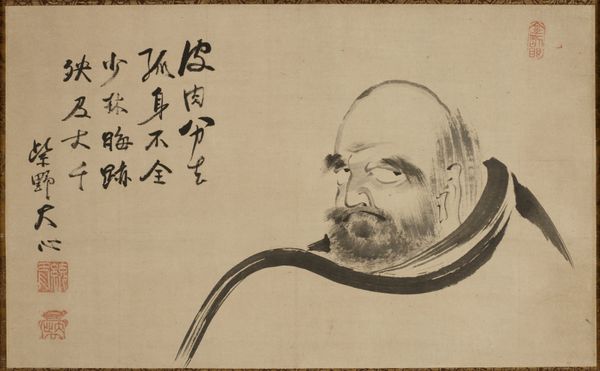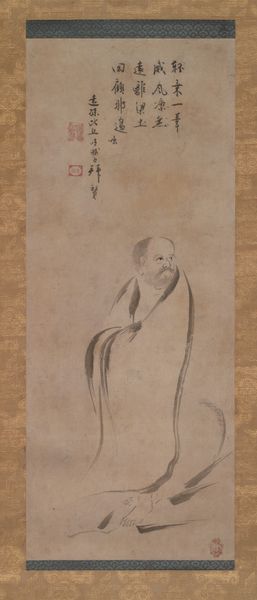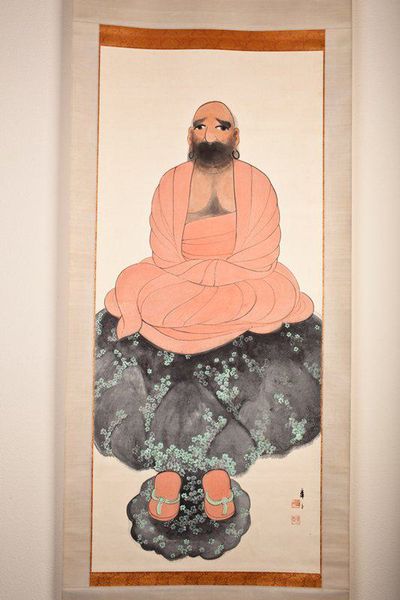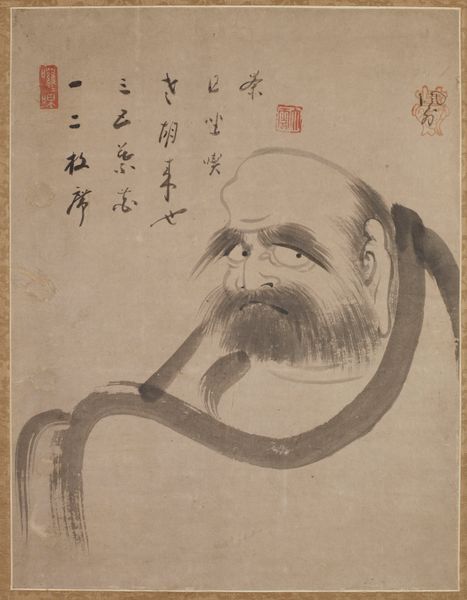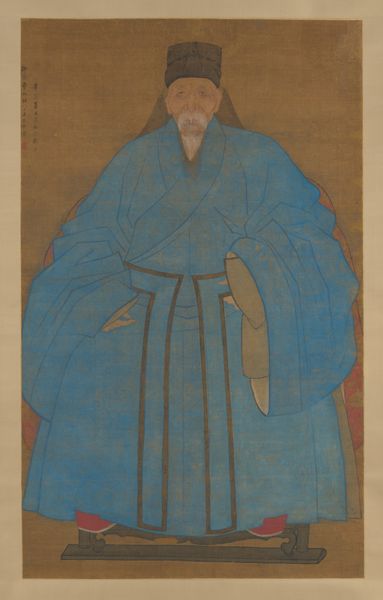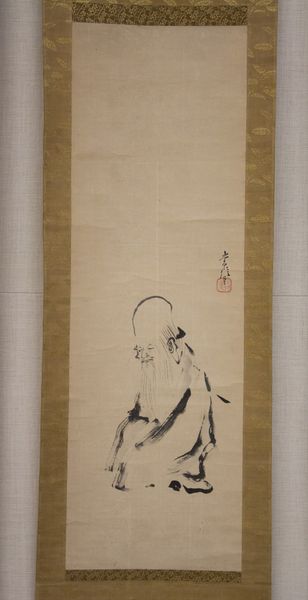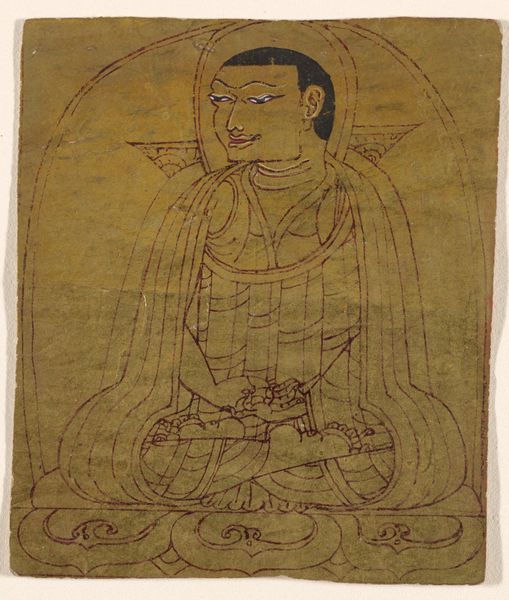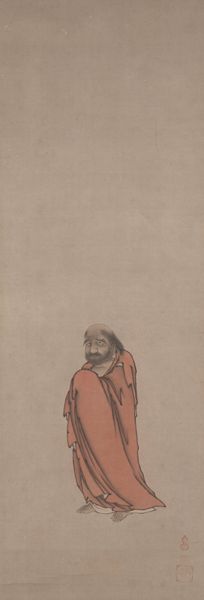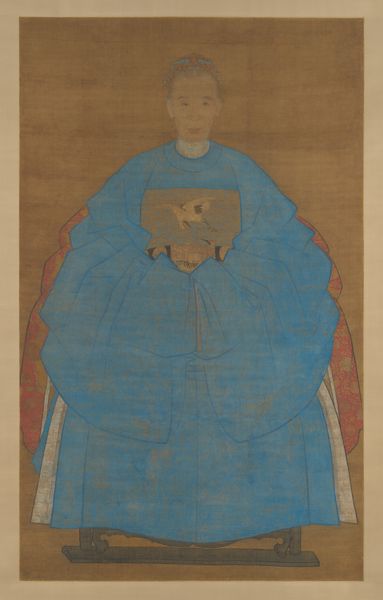
ink
#
portrait
#
ink painting
#
asian-art
#
figuration
#
ink
#
men
#
line
Dimensions: Image: 40 1/2 in. × 21 in. (102.9 × 53.3 cm) Overall with mounting: 78 1/2 × 26 7/8 in. (199.4 × 68.3 cm) Overall with knobs: 78 1/2 × 29 3/8 in. (199.4 × 74.6 cm)
Copyright: Public Domain
Curator: Let's discuss this 17th-century ink painting titled "Bodhidharma (Daruma)," attributed to Kano Sanraku, a work currently residing here at the Metropolitan Museum. Editor: He certainly has a presence! The severe expression combined with the minimalist rendering creates an incredibly powerful, almost intimidating figure. Curator: It’s precisely that duality which makes it fascinating. Bodhidharma, the founder of Zen Buddhism, is frequently depicted in Japanese art. His journey from India to China is steeped in legend. We must remember these portraits served very specific ritual and devotional purposes, beyond mere aesthetics. Editor: Absolutely, and those staring eyes! They're classic. He’s always depicted with piercing eyes, conveying intense focus and enlightenment. Even the large earring signifies something—doesn't it reflect a princely origin renounced for a life of asceticism? Curator: Exactly. His visual presentation underwent many permutations over the centuries. Artists, of course, weren't necessarily beholden to a purely documentary likeness. In the broader scope of portraiture during this time, consider the role of powerful images in validating status and lineages... Editor: Right. Sanraku is employing a sort of visual shorthand. Broad strokes quickly define the robe, yet details like the beard are rendered with careful attention. Those bold, unwavering lines speak of discipline and inner strength as if the very brushstrokes are mimicking his resolute spirit. The seated pose adds to that feeling of centeredness. It is visually compelling, isn’t it? Curator: Undeniably. He condenses aspects of social expectation while honoring a central figure in Buddhist history, contributing to his continued cultural legacy, even today. I find this painting a profound reminder of the intertwined nature of art, power, and cultural memory. Editor: I leave with an even stronger appreciation for this Daruma as a testament to the power of symbolic imagery to transcend centuries and, potentially, unsettle the soul.
Comments
No comments
Be the first to comment and join the conversation on the ultimate creative platform.
